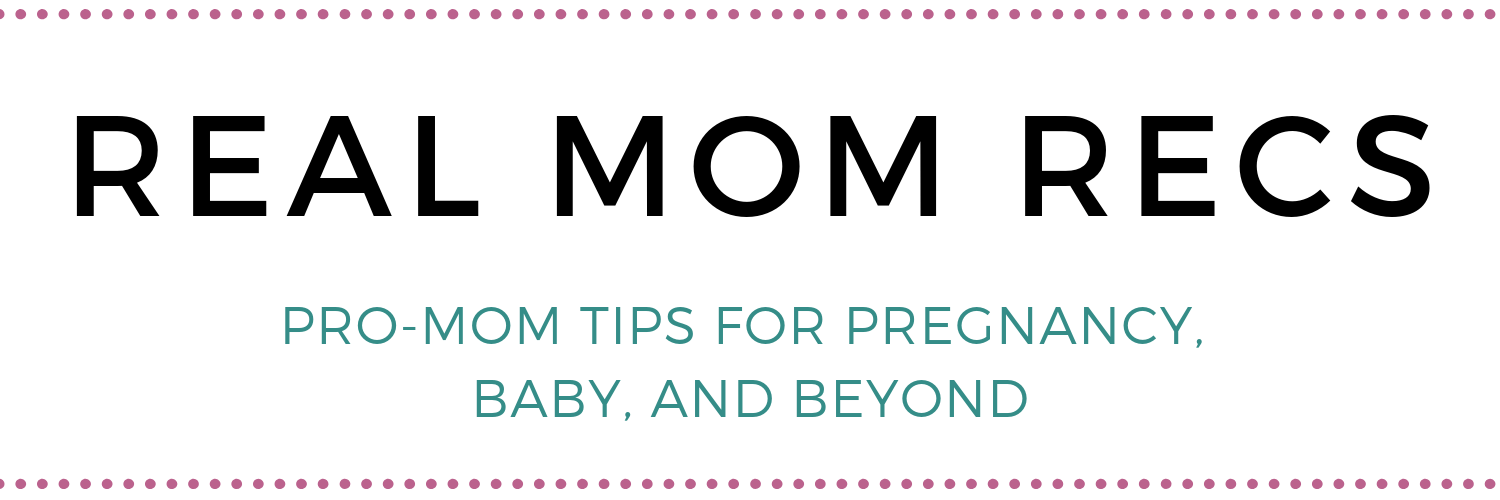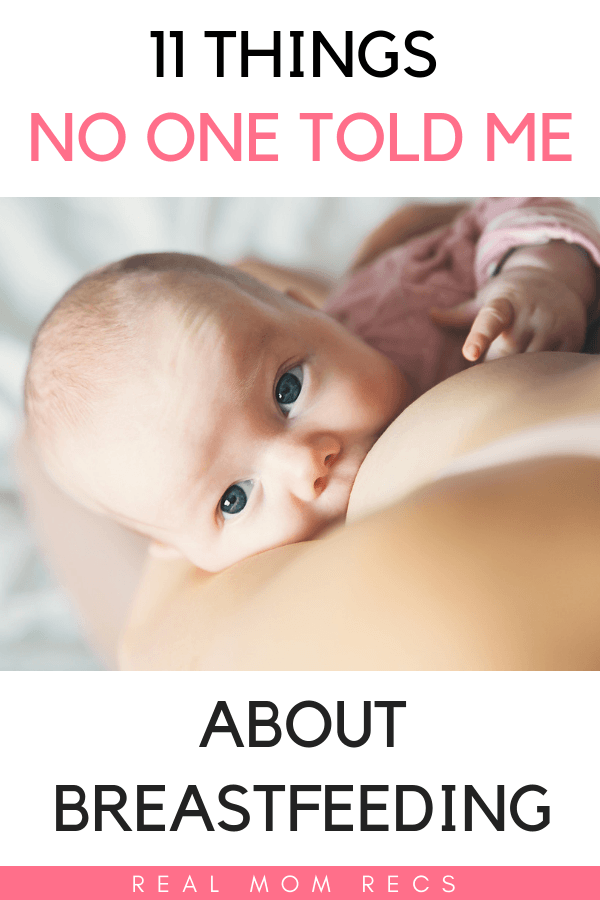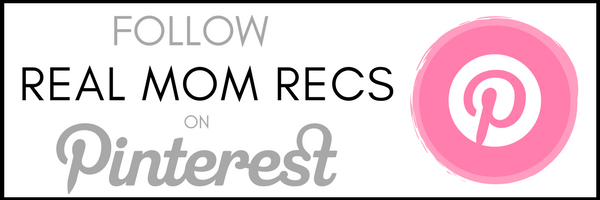Breastfeeding is a very primal thing. It’s something our bodies were made to do, but we forget that even though walking is second nature, we still had to learn how to do it!
Before having a baby, you might think you’ll deliver him, he’ll latch right on, and the feeding shall commence… simple as that!
More often though, there’s a steep learning curve, some pain, and maybe a few tears along the way. Don’t let this scare you! Knowing is half the battle. (And it’s important to remember that everyone’s experience is different, so yours may be different from mine, from your sister’s, and from your friend’s.)
Disclaimer: This post contains affiliate links, which means if you click one of the product links, I may receive a small commission at no extra cost to you.
As with most things, you’ll feel more confident if you’re prepared. Here are 11 things no one told me about breastfeeding:
Yes, breastfeeding hurts.
But the pain won’t last forever! Often it’s said that if it hurts, you’re not doing it right. Statements like these make new moms feel defeated.
Even if your baby is properly latched, breastfeeding is going to hurt in the beginning (think two to three weeks). This is a very sensitive part of the body, after all!
If breastfeeding is unbearably painful, however, don’t try to go it alone. Contact a lactation consultant to help diagnose and correct the problem.
You might feel a rush of emotions (good or bad) at the start of each session.
The hormone responsible for breast milk let down sends a surge of chemicals to the brain, almost as if you’ve taken drugs. Not every woman feels it. Some feel like they’re falling in love, while others experience really negative feelings.
If you are overcome with negative emotions or visions, make sure your support system knows and talk with your doctor.
The more you prepare ahead of time, the greater your chance of success.
Did you know that the more a pregnant woman is educated about breastfeeding, the more positive her outcome will be?
According to the World Health Organization:
Systematic review of the available evidence suggests that breastfeeding education is effective in increasing both the rate of breastfeeding initiation and breastfeeding duration.
A comprehensive breastfeeding course, whether in person or online, will help prepare you for potential pitfalls in the breastfeeding relationship, help you troubleshoot problems, and boost your confidence in feeding your child.
The best course I’ve found online is the Ultimate Breastfeeding Class from Milkology, which is extremely thorough and comes with some amazing bonuses like the Common Breastfeeding Issues Troubleshooting Guide, and Tips From Pumping Moms in the Trenches.
I love the video format- it feels like you’re learning from a guru in person, while you’re at home and comfy in your PJs. At $19 you can’t beat the price point for what you get.
I heard there is a new second class all about how to pump so you can go back to work. This one I haven’t taken myself, but if it’s anything like the first class I’m confident it will cover all the bases with specific plans of action. (If you try it, please come back and let me know how you like it!)
Even if you plan to breastfeed exclusively, you might need to pump.
There are many reasons a new mom might use a pump to express her milk instead of nursing the baby, but it’s rarely discussed before the baby comes. It’s as if pumping is a taboo topic, only brought up if a mom plans to go back to work.
In reality, almost every nursing mother will want to pump now and then for a variety of reasons. You might want Dad to be able to feed the baby, or be able to go out on a date night and have another caregiver feed the baby. Or even just to have some in the freezer in case of emergency.
If you don’t already have a pump, check out this post about how to get one for free.
Pumping is still breastfeeding!
When you feed a baby breast milk out of a bottle, you are still breastfeeding. You and your baby are both still reaping the many benefits of breastfeeding, whether the milk is delivered straight from the tap or via a pump and bottle.
While pumping comes with its own set of challenges, some mothers find it to be easier, or more convenient, or less painful than nursing.
Stock up on comfortable nursing bras.
Your breasts will likely feel heavy and sore at first. They might feel better if they’re supported in stretchy nursing bras or nursing tank tops round the clock.
This also protects the nipples, which might be raw and coated in lanolin or some other cream. These nursing tanks are not only more comfortable, but make breastfeeding really easy. Slip nursing pads
in the cups to keep from getting milk (or lanolin, which stains fabric, by the way) on your shirts.
Although I never slept in a bra in my life, when I started nursing I found it much more comfortable to wear a sleep bra. It keeps everything in place while you sleep and stops you from leaking on the sheets!
Supplementing with formula is a thing.
Moms who choose to breastfeed tend to strike the word formula from their vocabularies. In reality, many moms give their babies both breast milk and formula. Your lactation consultant or doctor can help you decide whether it’s the right choice for your baby, but many new moms don’t even know it’s an option.
If your baby isn’t getting enough breast milk, don’t take it as a failure on your part. Any amount of breast milk you can provide gives the baby valuable antibodies. Just remember: fed is best!
Stress will seriously affect your milk supply.
The first year of a baby’s life can be hard for many reasons. Financial stress, career stress, and marital stress only make things more chaotic than they already re. It’s important to make time for self-care, if for no other reason than to keep your supply up.
This post has lots of tips on how to keep your supply up (whether breastfeeding or exclusively pumping).
You will feel hungry and thirsty all the time.
Ok, so maybe someone did tell me this ahead of time. But I didn’t quite get it until I actually lived through the feeling of constant, insatiable hunger that only nursing moms know!
You may have heard about how breastfeeding is a great way to lose the baby weight, and for many people it is. But you should be aware of the possibility that breastfeeding will cause you to eat constantly and can actually keep some pounds on until you eventually wean.
Your baby will want to nurse more when she is sick.
Just expect this. On the bright side, your breasts will produce milk that provides the right antibodies to help your baby fight off the cold or virus it has, based on biological information in the saliva left behind by the baby. Cool, huh?
You can actually catch the milk that leaks during let down.
It used to be that when you start feeding the baby on one side, milk would leak out of the other side during the let down. You would need a pad or towel to stop the milk from dripping and getting on your clothes.
Finally some genius got smart and invented a way to catch this milk so it could be stored and used later, rather than wasted.
The Haakaa Breast Pump works on suction so there are no cords or anything to mess with, and it collects the milk the flows out of the non-nursing breast while you feed. It might not collect many ounces per feeding, but when used consistently the small amount that you get at each feeding can definitely add up!
If you only want to use it occasionally, using it during the first feeding of the morning should give the best results. This is when your breast are most full, so the non-feeding side will have plenty to give.
Breastfeeding is cheaper than using formula, but it isn’t free.
There are plenty of really good reasons to choose breastfeeding over formula feeding, if that option is available to you, but don’t go into it thinking you won’t have to shell out a penny.
When you consider the costs of a pump, a lactation consultant, nursing bras, nipple creams, nursing pads, and pillows, you could end up spending $1,000 in the first year. Of course many of these aren’t likely to be repeat expenses for each baby you have.
Formula feeding can cost up to $1,500 during the baby’s first year. Add bottles, sterilizers, bottle brushes, etc. and the cost can really climb. (You might need some of those items even if you go the breast milk route.)
Basically, if you make the decision to breastfeed for financial reasons, you might end up unpleasantly surprised.
What did you feel unprepared for when you started breastfeeding?
Let me know in the comments!
For all things pregnancy, baby, and parenting, be sure to follow me on Pinterest!






5 comments
This is great! We need to continue to spread the truth for new mom expectation management. I beat myself up when I had to give my baby formula. For no reason!
Absolutely! New moms don’t need that kind of stress and guilt!
I’m having my second baby in December I’m so scared that I can’t make breastfeeding work for me. I want to breastfeed for 2 years with her. I’ve read so much! I’m buying a ton of stuff, I want a supply, but i want to pump and breastfeed but I feel like I dont know enough to build a supply, to pump and feed. Please anything helps!
Hi Nikki! I breastfed and pumped with both of my babes- it is definitely doable! My best advice would be to nurse only for the first few weeks. This is when you establish your supply and it’s all based on how much your LO takes from you so do not supplement with anything. After your supply is regulated, pick one time per day to start pumping. Stick to the same time each day. Your best bet will be either first thing in the morning (you will wake up very full so this is a good time to get a decent amount) OR during baby’s longest stretch of sleep. After you adjust to one pumping session per day, you can add another. Consistency is key. And definitely have a lactation consultant on hand to help, especially right after birth. You can SO do this! Good luck!